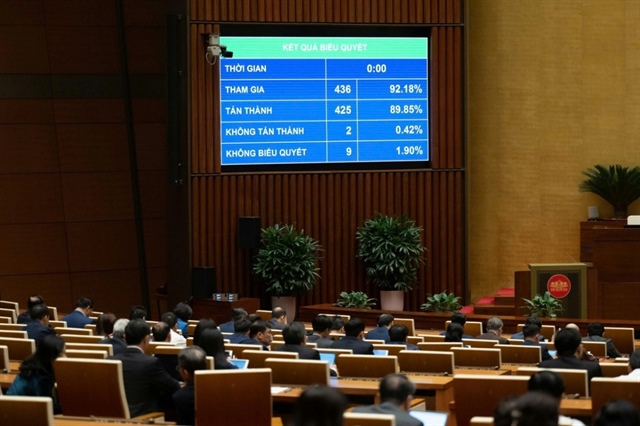Viet Nam and New Zealand to build resilience in agriculture economies
Viet Nam and New Zealand to build resilience in agriculture economies
Viet Nam and New Zealand pledged to deepen the two countries’ agriculture and trade relationship in a virtual dialogue held on Wednesday.

At the second New Zealand - Viet Nam Agricultural Dialogue, Le Quoc Doanh, deputy minister of the Ministry of Agriculture and Rural Development (MARD) and Chief Executive of the New Zealand Ministry for Primary Industries, Ray Smith affirmed that in order to realise the goal of achieving two-way trade turnover of US$2 billion by 2024, increasing bilateral agricultural cooperation and connections between the two countries was key.
From Ha Noi, Doanh said the dialogue would boost connections, cooperation and two-way trade, in line with what the sides' Prime Ministers highlighted in the Strategic Partnership Joint Statement last year.
During the pandemic, the local agricultural industry still achieved a growth rate of 2.9 per cent, reaching a record of US$48.7 billion, said Doanh, adding that to boost the industry as the pandemic was gradually controlled, Viet Nam would like to strengthen cooperation with New Zealand in trade, investment, science and technology in the agricultural sector to take advantage of those opportunities.
Also to implement the commitments made at COP26 through support to develop value chain development projects of low-carbon agriculture, Viet Nam welcomed the New Zealand-funded Global Research Alliance on Agricultural Greenhouse Gas Reduction (GRA) for choosing Viet Nam as the focal point for the ASEAN region.
Doanh said Viet Nam was ready to be the focal point to participate in a new initiative developed at the request of GRA ASEAN members and New Zealand on increasing support in greenhouse gas inventories, research on mitigation of climate change impacts, climate and smart agriculture.
After the official export of fresh mango in 2011, dragon fruit in 2014 and rambutan in 2018, Doanh said the country was completing procedures to export fresh lemons and pomelos to New Zealand and oranges, tangerines and longan after that.
Doanh asked his counterpart to create more favourable conditions for Vietnamese agricultural and aquatic products to enter the New Zealand market, speeding up the market opening for agricultural, forestry and fishery products by both online and offline manner.
The Vietnamese official said Viet Nam also wanted to enhance the promotion of in-depth cooperation in the agricultural sector under the model of combining New Zealand's technology and market development experience to improve the quality of the country's products.
He asked New Zealand to keep supporting Viet Nam in branding and developing the market for dragon fruit according to the model applied to New Zealand's kiwi fruit as well as to support the construction and development of a safe food supply chain model with traceability and building capacity for food safety inspection and certification in the country.
In response, Smith said: "It is the opportunity for both sides to consider how both countries can work together to build resilience and vitality in our agriculture economies following the COVID-19 pandemic."
He said the New Zealand Ministry for Primary Industries was already supporting agriculture cooperation with MARD with activities in plant health, veterinary epidemiology and electronic certification.
He added these activities complement New Zealand’s ongoing development programme, which has a number of agriculture projects including the premium fruit development project in Tien Giang, the rural dam safety project in Central Viet Nam, and the safe vegetables project in Binh Dinh.
Mentioning New Zealand has developed one of the most efficient agriculture sectors in the world, with a reputation for cutting edge research and technology, robust and safe agricultural practices, and delicious and high-quality products, Smith said: “We recognise that increased trade is not just about exporting more products, it's about an exchange of knowledge, expertise, technology, services, and investment. This two-way exchange benefits both of us.”
He added: “We also look forward to finalising new fruit access for each other this year so consumers can enjoy New Zealand strawberries and squash in Viet Nam and Viet Nam’s limes and pomelos in New Zealand.”
He reaffirmed that New Zealand will keep assisting MARD’s greenhouse gas inventory capability through the Global Research Alliance on Agricultural Greenhouse Gases.
At the dialouge, both sides committed to advancing their key agricultural interests in enhancing bilateral trade, reducing agricultural greenhouse gas emissions, promoting food safety, utilising agriculture research and technology, and in rural development.
According to data, two-way merchandise trade between New Zealand and Viet Nam in 2021 topped $1.56 billion, an increase of 14 per cent, and by December 2021, Viet Nam was New Zealand’s 15th largest trading partner. Viet Nam remains a promising market for New Zealand and vice versa due to robust demand for key agricultural products.


























